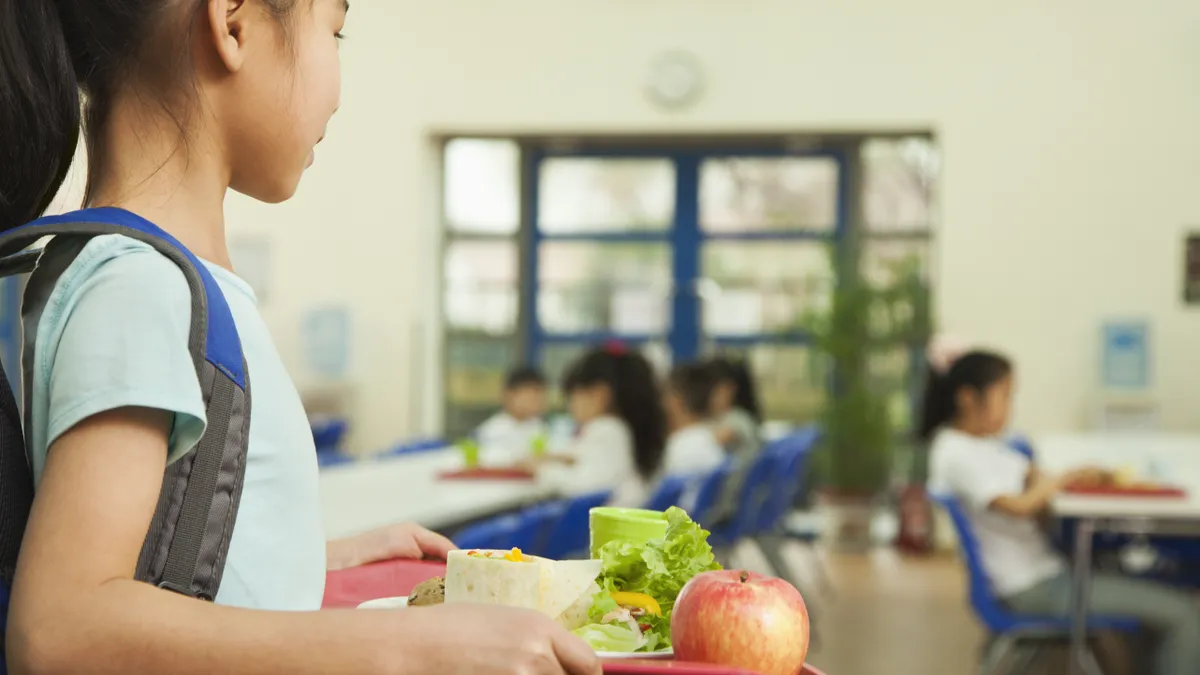Dive Brief:
- As some schools deal with growing lunch debt and increasingly negative reactions to "lunch shaming" practices such as refusing to serve students whose accounts are overdrawn or providing a cold meal alternative, state laws are also being rewritten to oppose such practices, a federal bill is on the table, and some presidential candidates are incorporating the issue into campaign promises, Education Week reports.
- Meanwhile, roughly 30 million students a day are fed through the National School Lunch program, with 68% of receiving free federally subsidized meals, and a growing number of students — 13,564,000 at last count — attend schools where meals are free to all because the school qualifies for the Community Eligibility Program.
- Districts struggle with what to do when families who can pay forget or refuse to do so, with unpaid meal debt in one Oregon district growing, for example, from $1,200 in 2016-17 to $104,000 this year after the state passed an anti-lunch-shaming bill. Some schools are trying to solve the issue by soliciting donations to “angel funds," withholding diplomas, or working with parents to help those who qualify apply for federal assistance.
Dive Insight:
The school lunch debate is sure to be drawn even more into national headlines as some presidential hopefuls are using the issue to draw attention to their campaigns. Sen. Bernie Sanders and Julian Castro have touted universal free school meals as a solution, though neither has outlined the cost or where the money will come from.
For now, school administrators are left to wrestle with this complex issue. On the one hand, debt from school meals is a growing problem, and one that the USDA expects districts to find a way to solve. On the other, some practices schools have traditionally used to encourage parents to keep current with accounts, such as providing substitute cold meals, are now being viewed as “lunch shaming” because they draw attention to children who find themselves caught in the crossfire of the issue through no fault of their own.
Several states, including New York and Tennessee, have either already passed legislation prohibiting the use of lunch shaming or are considering such legislation. School districts are also evaluating their policies to try to find alternatives. But these solutions are not easy to develop.
While the simplest solution is to provide meals to all students, the funds for this must be found. And a significant percentage of schools that already qualify for universal free lunch under the Community Eligibility provision — nearly half of eligible schools in the 2016-17 school year — do not take advantage of the program.
Some districts felt they would be worse off financially under the program's funding formula. Others worry how the program will affect other Title I funds, since financial statements are no longer collected from parents under the program. As these concerns are addressed, however, more schools may take advantage of that program.
A number of states and school districts are seeking ways to provide meals to all students through other funding methods. Just as some states use “sin taxes,” gathering revenue from marijuana or tobacco sales or gambling ventures to provide funding for early childhood education programs or capital needs, they may be able to find similar ways to expand school lunch programs.
On the district level, schools may be able to hold fundraisers or solicit donations from individuals, parent-teacher organizations, or other community partners to erase school lunch debt. In the end, though, it seems important that the parents who can pay for their own child’s lunch should be encouraged to contribute to the cost — and kept aware of debts — so these funds can go for other aspects of education that are equally important.











